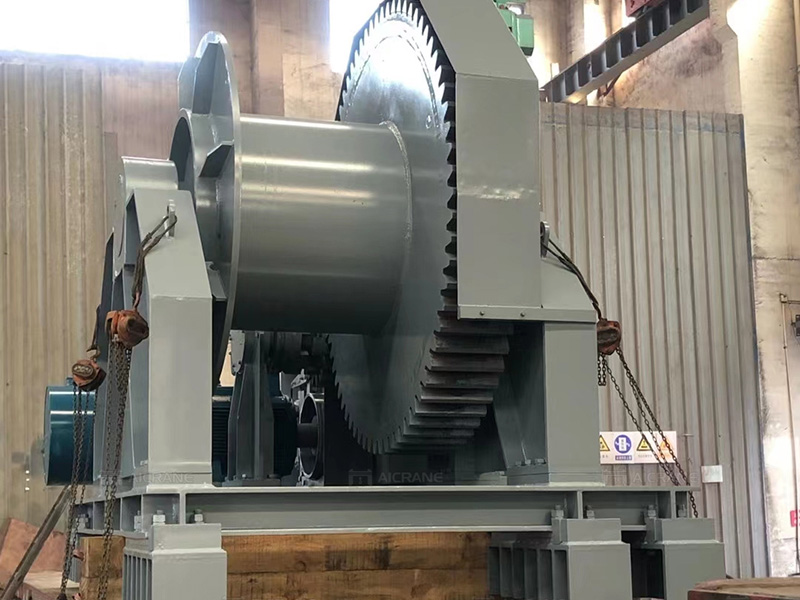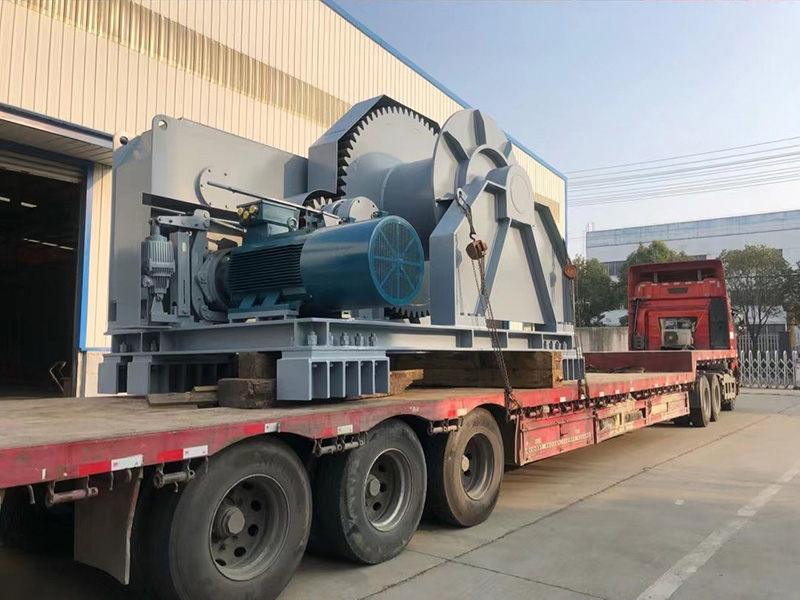In the realm of heavy lifting and industrial applications, the 100-ton winch stands as a stalwart, capable of handling substantial loads with precision and power. However, the journey from manufacturing facility to operational site involves meticulous planning and adherence to stringent transportation and installation protocols. In this article, we delve into the intricacies of transporting and installing a 100-ton winch, exploring the challenges, considerations, and best practices involved in this critical process.

Transportation Challenges:
Transporting a 100-ton winch presents a myriad of logistical challenges owing to its size, weight, and specialized components. From navigating narrow roads to complying with weight restrictions, every aspect requires careful attention to ensure the safe and efficient delivery of the equipment. Here are some key considerations:
Road Transport: Most 100-ton winches are transported overland via trucks or trailers. However, the sheer weight and dimensions of the equipment may necessitate special permits and escorts to comply with local regulations regarding oversized loads.
Route Planning: Detailed route planning is essential to identify potential obstacles such as low bridges, narrow passages, or weight-restricted areas. Specialized transport companies often conduct route surveys to assess the feasibility of transporting heavy equipment along specific routes.
Load Stability: Securing the winch onto the transport vehicle is critical to prevent shifting or tipping during transit. Heavy-duty tie-downs, chains, and braces are used to immobilize the equipment and ensure stability throughout the journey.
Environmental Considerations: Weather conditions and environmental factors can impact transportation logistics. Extreme temperatures, high winds, or adverse terrain may require additional precautions or delays to ensure safe transport.
Installation Preparations:
Once the 100-ton winch arrives at its destination, meticulous preparations are undertaken to facilitate its installation. From site assessment to foundation construction, each step is meticulously planned to ensure the successful integration of the winch into its operational environment. Here are the key aspects of installation preparations:
Site Assessment: Before installation commences, the operational site undergoes a thorough assessment to determine suitability and accessibility for the 100-ton winch. Factors such as ground stability, proximity to utilities, and clearance for equipment movement are carefully evaluated.
Foundation Construction: The foundation serves as the anchor for the winch, providing stability and support during operation. Depending on the site conditions and load requirements, foundations may be constructed from reinforced concrete or steel to withstand the forces exerted by the winch.
Utility Connections: Integration with existing utilities such as power, water, and compressed air may be necessary depending on the type of winch machine and its power source. Coordination with utility providers ensures seamless connectivity and functionality upon installation.
Clearance and Safety: Adequate clearance around the installation site is essential to facilitate equipment movement and maintenance activities. Safety barriers, signage, and designated work zones are established to ensure the safety of personnel and bystanders during installation and operation.

Installation Process:
With preparations complete, the installation of the 100-ton winch can commence. This phase involves a coordinated effort between skilled technicians, engineers, and equipment operators to ensure the seamless integration of the winch into its operational environment. Here’s an overview of the installation process:
Positioning and Alignment: The winch is carefully positioned on the foundation using specialized lifting equipment such as cranes or forklifts. Precision is paramount as the winch must be aligned with auxiliary equipment and attachment points for optimal performance.
Anchoring and Fastening: Once in position, the winch is anchored to the foundation using heavy-duty bolts or anchor systems. Torque specifications are followed meticulously to ensure proper fastening and stability under load.
Electrical and Mechanical Integration: Electrical connections are made to power the winch, while mechanical components such as gearboxes, motors, and control systems are assembled and integrated. Calibration and testing procedures are conducted to verify functionality and performance.
Safety Inspections: Before commissioning the heavy duty electric winch for operation, comprehensive safety inspections are conducted to identify any potential hazards or deficiencies. Emergency shutdown systems, safety interlocks, and operational controls are tested to ensure compliance with regulatory standards.
Conclusion:
Transporting and installing a 100-ton winch is a complex undertaking that requires careful planning, meticulous execution, and adherence to strict safety protocols. From navigating transportation challenges to preparing the installation site and integrating the equipment into its operational environment, every step demands precision and expertise. By following best practices and leveraging the expertise of qualified professionals, organizations can ensure the successful deployment of these heavy-duty lifting solutions, empowering them to tackle the most demanding industrial tasks with confidence and efficiency.
